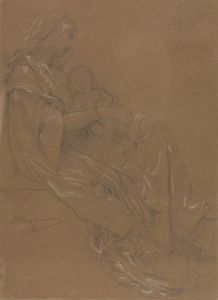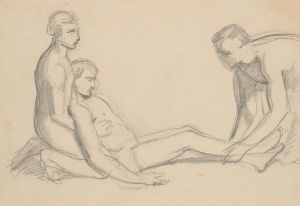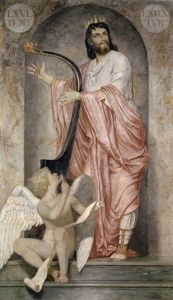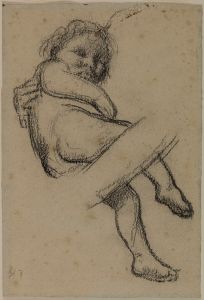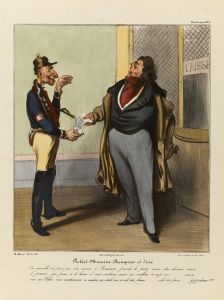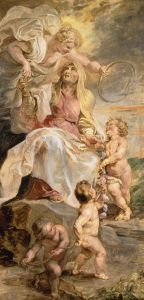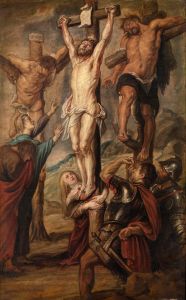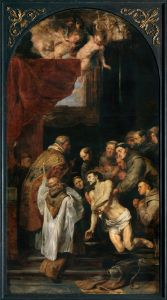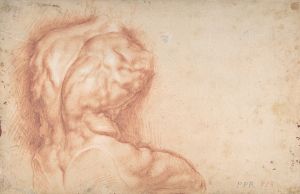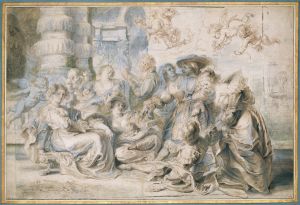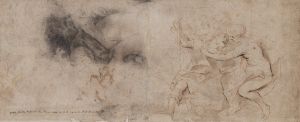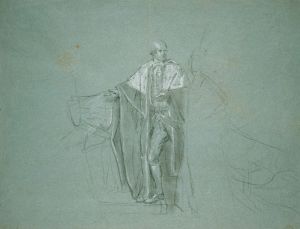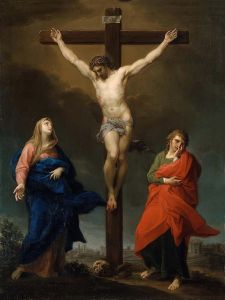
Christ Salvator Mundi
A hand-painted replica of Peter Paul Rubens’s masterpiece Christ Salvator Mundi, meticulously crafted by professional artists to capture the true essence of the original. Each piece is created with museum-quality canvas and rare mineral pigments, carefully painted by experienced artists with delicate brushstrokes and rich, layered colors to perfectly recreate the texture of the original artwork. Unlike machine-printed reproductions, this hand-painted version brings the painting to life, infused with the artist’s emotions and skill in every stroke. Whether for personal collection or home decoration, it instantly elevates the artistic atmosphere of any space.
Peter Paul Rubens, a prominent Flemish Baroque painter, is attributed with creating a painting titled Christ Salvator Mundi (Christ the Savior of the World). This artwork depicts Jesus Christ as the Savior, a common theme in Christian art, symbolizing his role as the redeemer of humanity. In this representation, Christ is often shown blessing the viewer with one hand while holding a globe in the other, signifying his dominion over the world.
The painting reflects Rubens' mastery of Baroque techniques, including dramatic use of light, rich color palettes, and dynamic composition. Rubens was known for his ability to convey emotion and spirituality in his works, and Christ Salvator Mundi is no exception. The figure of Christ is typically portrayed with a serene yet powerful expression, emphasizing his divine authority and compassion.
While Rubens created numerous religious works throughout his career, the exact details surrounding the creation of Christ Salvator Mundi are not well-documented. The painting is believed to have been produced during the early 17th century, a period when Rubens was highly active and sought after for religious commissions. His works during this time often reflected the Counter-Reformation ideals, aiming to inspire faith and devotion among viewers.
Several versions and copies of Christ Salvator Mundi attributed to Rubens or his workshop exist, which was a common practice in his studio. Rubens often employed assistants and collaborators to reproduce or adapt his compositions, making it challenging to determine the extent of his direct involvement in some pieces. Art historians have studied these works to distinguish between those painted by Rubens himself and those completed by his workshop.
The provenance of specific versions of Christ Salvator Mundi varies, with some held in private collections and others displayed in museums. The attribution of these works to Rubens has been a subject of scholarly debate, as is often the case with artworks from this period. However, the influence of Rubens' style and technique is evident in all versions associated with his name.
Due to the limited documentation and the existence of multiple versions, precise information about the original Christ Salvator Mundi by Rubens remains elusive. Nonetheless, the painting is recognized as an example of Rubens' contribution to religious art and his ability to convey profound theological themes through his dynamic and emotive style.





